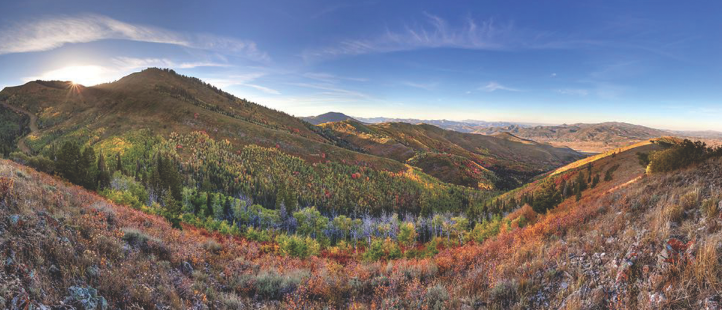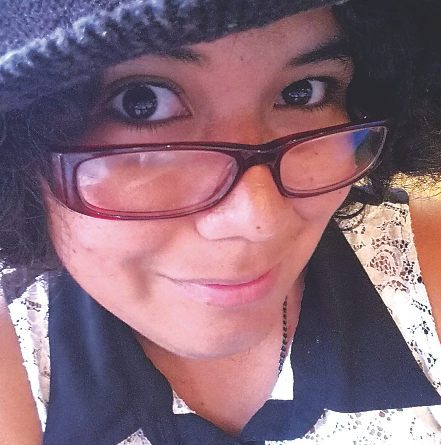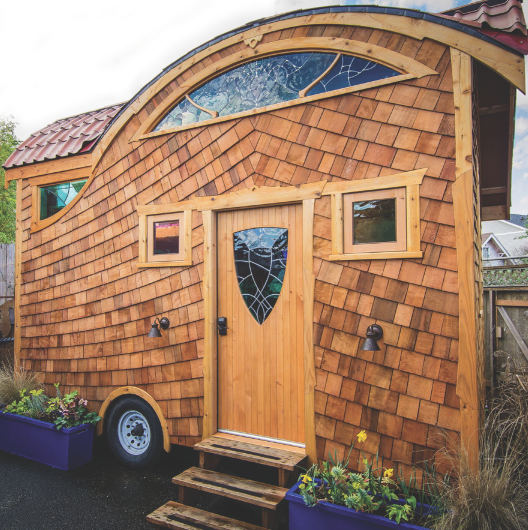
Today, Bonanza Flat is 1,350 acres of undeveloped mountain on the dividing line between the Wasatch Front (Salt Lake’s side of the range) and the Wasatch Back (Heber City’s side). From these lands, hikers and trail runners access the Wasatch Crest Trail. Families fish the half dozen small alpine lakes. In the winter, snowmobilers cross the lower flats on the closed Guardsman’s Pass road and backcountry skiers descend into the open meadow bowl beneath 10420 Peak.
These 1,350 acres also hold one of our state’s most precious natural resources: water. Part of the Weber River Basin, this area receives the highest amount of average annual precipitation in the state, 27 inches, most of which falls in the form of snow. According to the Utah Division of Water Resources, this basin produces approximately 3.5 million acre-feet of water, which is used by agriculture and development down stream. Development within this watershed could certainly affect what flows downstream from the Flat.
Last year a high-end developer, with plans for a gated community and private golf course, inquired about purchasing Bonanza Flat from Redus, LLC (part of Wells Fargo Bank). They almost struck a deal—one that could still be finalized, taking the Flat out of public reach forever, unless, by June 15, individuals, organizations and government entities that make up our community can bring together $38 million to purchase and preserve Bonanza Flat in perpetuity.
The campaign to save Bonanza Flat is a grassroots initiative with a lot of strong momentum, but as with anything that’s grassroots its success cannot come from a few powerful players at the top but from the momentum of many passionate people working together from below.
GRASSROOTS is the third installment of CATALYST’s Change Agents series. Here we look at Salt Lake Excess, a student-led food justice program; art as activism with Resist zine creator Ella Mendoza; citizen-led changes to local ordinances; and CATALYST’s own campaign to bring attention to Great Salt Lake. These are hyper-local stories of people and projects that are changing lives and making our community stronger. Let them be an inspiration. How will you make this a better place?
Bonanza Flat
ENVIRONMENTAL
PROTECTION
Back in 1994, Utah Open Lands (UOL), a local non-profit land trust conservation association, was in the process of acquiring and protecting an area of the Wasatch Back called Snake Creek when they noticed an adjacent drainage called Bonanza Flat and recognized it as something special. Ever since then, UOL has kept feelers out for when the privately held parcel might come up for sale. Then, in 2016, they got a call from Park City’s City Council. Park City was in negotiations to purchase Bonanza Flat but they were unable to foot the entire $38 million bill. “There was no question,” says UOL Director Wendy Fisher, “if there was ever a time to bring together a coalition it was this.”

Six months in, the campaign to save Bonanza Flat now includes, in addition to Utah Open Lands and Park City (whose voters recently passed a $25 million ballot measure for the purchase of the land), Save Our Canyons, Sierra Club, Friends of Alta, Mountain Trails, Trails Utah, Wasatch Backcountry Alliance, Wasatch Mountain Club, Winter Wildlands Alliance, Summit Land Conservancy and many, many individual donors, just normal people like you and me (disclosure: this story’s author contributed to the Bonanza Flat fund). At a time when national events seems so far from our control, coming back to something as local as saving Bonanza Flat can reinstate a sense of individual agency. “So many people have told me they are concerned about their inability to effect change or positive progress,” says Fisher. “And yet we have seen so many people committed to this effort because it was one thing they could positively effect. For me, this has been a broader sign that, yes, we see that as individuals we can make a difference.” Contributions from Park City, Summit County and Salt Lake City have brought the campaign within sight of the goal, but a setback in March, when the Republican-majority Salt Lake County Council denied a $3 million contribution that would have finalized the purchase, will keep this grassroots fight going into summer.
TAKE ACTION
Start a conversation about Bonanza Flat with friends and neighbors who may not of heard about it. Contribute what you can, go to UtahOpenLands.org/save-bonanza-flats. Contact the Salt Lake County Council, especially the five members that voted against (Richard Snelgrove, Michael Jensen, Aimee Winder Newton, Steve DeBry, Max Burdick) and encourage them to change their minds about Bonanza Flat.
6/21/17 Post-press update: Bonanza Flat is saved! June 13, Salt Lake County pledged $1.5 million to close the funding gap.

Ella Mendoza & Resist
IMMIGRANT RIGHTS—ART SPEAKS
Ella Mendoza, 27—artist, writer, activist.
Born—Lima, Peru, brought to the United States when she was 12.
Ella Mendoza’s storytelling, her art and her activism, is often told through the lens of skin color. Her father, she says, is light-skinned. Her mother is dark-skinned. This is an important distinction because, as Mendoza writes, even in Peru “a lighter-skinned man had better access to money and resources.” When her family had enough money to seek out a new life in the United States it was Mendoza’s father who brought her to her new home. Her mother remained behind.
Mendoza is one of about 130,000 undocumented immigrants living in Utah. Nationally our state has the tenth-greatest number of undocumented workers. Deeply committed to the community of undocumented immigrants of which she is openly a part of, Mendoza is not one of those people who found themselves pushed into action only after the recent election. She has long questioned power structures that try to define where she belongs and what she is capable of.

In 2013 Mendoza began working with Peaceful Uprising. Since then she has spent time in the camps at Standing Rock (she lived there last year from August to December) and with the Utah Tar Sands Resistance. She helped to co-found the Utah chapter of Familia: Trans Queer Liberation Movement and she is currently active with ROAR (Roots of Autonomous Resistance) Collective, a union of people of color resisting modern-day colonialism as perpetuated through the continued theft of native lands and resources.
Inspired by a feminist zine workshop she recently attended in New York, Mendoza created Resist, a pocket-sized handbook filled with her sketches—thick black curling lines that become flowers and the faces of women, and tools of resistance. Her second in this zine series, How to Make Art, gave protesters tips on how to stay safe and be heard—with ideas and prototypes for signs, banners and stencils. The third in this series, out soon and available at Diabolical Records, is Know Your Rights: Defending Our Community (a PDF is also available for free online at Ellita.net).
“My community is other undocumented people and we have been through a lot together,” says Mendoza. She also uses Resist as a love letter for the people she considers family. “It’s a note that reminds you that you are special. You will survive.”
TAKE ACTION
Get some ideas on how to make your own zine: Attend the Alt Press Fest the City’s Main Library this summer, Saturday July 8, noon-4pm.
Salt Lake Excess
STUDENT INITIATIVE—FOOD JUSTICE
It all started in the college Praxis Lab at the University of Utah, in 2016. Ten students taking one of the University Honor’s College’s special semester intensive courses were asked to dig into the problems facing our food systems.

According to the United Nations, one-third of all food globally goes to waste. That adds up to $750 billion of food waste each year. In Utah, that problem makes up about 20% of all the waste in our landfills—yes, one fifth of all the waste that gets dumped was once edible. And while all that is rotting away, 144,000 working Utahns say they can’t afford enough food.
Designed to be more than a normal undergrad class, Praxis pushed students beyond simply reading and absorbing lectures about issues and regurgitating facts in term papers. After an initial phase of study, the students identified something within the context of the class that they wanted to work on, an issue they could create a solution for. And so the students started Salt Lake Excess.
“Our taskforce identified waste as a key food systems issue,” explains Salt Lake Excess Program Manager Olivia Juarez. “Local restaurants and farmers throw away a lot that could be going to people in need, but most businesses won’t pay to have the food delivered to organizations that need food donations. Businesses have a bottom line to look after.” The problem, explains Juarez, isn’t that people don’t want to donate extra food, it’s usually just a lack of infrastructure that makes linking those with food to give away with those in need a time consuming and expensive proposition. With Excess, she says, “now they can do that for free.”
Juarez is working hard to have the foundations set to begin taking action by the time next school year gets off the ground in the fall. The program already has five committed donor partners and three recipient partners, including some Salt Lake County senior citizen centers, eagerly waiting for pick-ups and deliveries to start.
Here’s how the program will work: Donors create an online account where they can post excess food when it comes available and a time that it can be picked up. Then the donor packages the food donation and records the weight, date and cost equivalent of the donated food. The account entry, which is linked to an app, then notifies one of the many volunteer student Excess deliverers who pick up the donation. Claiming the food is just as easy (for qualifying organizations). Create an account, select the foods needed and look for a notification when it comes available. Claim the food and a helpful volunteer will deliver it.
TAKE ACTION
If you are interested in volunteering with Salt Lake Excess, or if you would like to find out more about becoming a donor or a recipient email: SaltLakeExcess@gmail.com. You can also check out their website and create an account at SaltLakeExcess.wordpress.com.
CATALYST & Great Salt Lake
ENVIRONMENTAL
WITNESS
In 6th grade, my class studied the Great Salt Lake, a body of water that lay only 16 miles from our classroom but which we hardly ever saw and really only thought about on the days when the wind blew in the briny smell of the lake and of bird shit and of dying, decaying brine flies. As part of the study unit, we students spent a day on Antelope Island State Park where we collected brine shrimp and lake water that afterward sat for weeks in jars on the counter in our classroom.

I always considered Antelope a strange place, a slice of desert surrounded by water in a landlocked sea, but I had never really questioned its status as an island until just two years ago when I walked to its southernmost point and found not water but a flat, dry lake bed stretching all the way to the far shore. For some observant few, it will come as no surprise that, since 2011, the waters of Great Salt Lake have been receding. Antelope is now effectively a peninsula jutting out from the northwest quadrant of Salt Lake.
Yet, to our detriment, we continue to call it an island. As long as Antelope remains in our lexicon and in our minds as an “island,” the lake is not shrinking. As long as the lake is not shrinking we can entertain ideas, like the Bear River Dam, that would further degrade its environment and threaten its existence. On weather sites like AccuWeather, environmental news sources like EcoWatch, popular news sources like Huffington Post, foreign publications like Britannica, even within the government’s very own NASA program, people are talking about our lake’s shrinking shoreline. But are we?
Great Salt Lake, as most of us know, is a shallow lake. Ten feet of water, up or down, can make a big difference, exposing lakebed or causing flooding. During the 1983 flood, the lake level peaked at 4,205 feet. By the time lake level receded to 4,197 feet, in September 2011, Farmington Bay to the east of Antelope Island was already showing large patches of exposed dry lakebed. By September 2016, with the lake down seven more feet, Farmington Bay had become an extension of the Jordan River flowing towards the causeway.
This year, CATALYST will become an environmental witness. Each month we will report the Great Salt Lake’s water level as it rises and falls, and compare it with historic highs and lows. As the year continues, we will periodically turn our attention to the lake through reporting and stories that inform and excite. We will not let the lake slip away unnoticed.
If you or your organization are interested in underwriting this series please contact Greta deJong at 801-815-2973
Data from USGS Water Resources (noted as elevation of surface above sea level):
Current lake level (as of May 18): 4,194.20 ft
Historic Recorded Max (1990): 4,203.70 ft
Historic Recorded Min (2016): 4,190.82 ft
Calculated Median: 4,197.69 ft
Note: A spike in water input on May 13 brought lake levels temporarily up to 4,196 ft.
Tiny house
LOCAL AUTHORITY—HOUSING SOLUTIONS

“I am a minimalist,” says Cynthia Wong, a witty, passionate and tenacious woman who is, to date, the most successful advocate for tiny home living in the state of Utah. “I’ve had dreams of living in a tiny home for seven years now and if there’s anything related to tiny homes, I will show up. Really, my love of them comes from a sense of adventure… and not liking stuff too much.”
These days, tiny homes are a Pinterest and reality television show phenomenon (Tiny House, Big Living; Tiny House Hunters; Tiny House Nation). And in case this trend has passed you by, here’s a little explanation of a tiny house: Picture something in the range of 200 sq. ft., but not a mother-in-law cottage (more portable) and not an RV (more stylish, think rustic wood or modern steel siding). Inside, a lofted bed, a composting toilet, a fold-out table, an electric wall heater. There are lots of tiny homes and endless designs, so they aren’t all exactly the same, but you get the idea.
For the most part, tiny houses are a relatively cheap housing option, normally costing in the range of $40,000 to build. But where do you put them? Most U.S. cities, including Salt Lake City, are wary of allowing tiny houses to move into backyards and driveways. In Utah, the only city with an Accessory Dwelling Unit ordinance that allows tiny homes as legal live-in residences is Pleasant Grove, a small community (population 33,500) in, of all places, Utah County. This accomplishment is thanks to Wong.
A resident of Utah County, Wong knew that Pleasant Grove encouraged accessory dwellings, like studio apartments above garages and mother-in-law apartments, as a solution to the city’s growing need for housing. Seeing this as an in-road for tiny houses, Wong, who had learned about zoning laws and ordinances regarding tiny houses while attending a national convention, drafted a proposal and set up a meeting with Ken Young, the city’s community development director and a few other city employees.
“We were all crammed in the city council room and I’m pitching the idea, just being myself,” recalls Wong, “but it was kind of intimidating. They were stone faced. It didn’t seem to be going well.”
Eight months after their meeting at the city office, Wong received news that the next council meeting would included a review of a new ordinance for tiny houses.
“They were totally overwhelmed,” says Wong, recalling the astounding number of people who attended the meeting in support of the new ordinance.
During the period for public comment, Pleasant Grove officials heard testimonials from people who saw a tiny living as an answer for housing aging parents, or poor college students. She says not a single voice in opposition was sounded. “They voted on it right there,” Wong recalls, “and it passed unanimously.”
Almost a year after passing of the new ordinance, Wong still doesn’t know anyone in Pleasant Grove who lives in a tiny house. “The tiny house thing is a great idea, but you need the right lifestyle for it,” admits Wong. “My daughter is open to a tiny house. But my mom, [who Wong also lives with], she’s a hoarder. She sees the tiny house thing as more of a hobby.”
It’s more than just family life keeping Wong from fulfilling her dream. A number of restrictions also make the new ordinance less than ideal. To be legal housing units, Wong says, the city has required that tiny houses have their own parking space and be located behind an existing structure. The most frustrating part of the ordinance, for Wong, is the requirement that these dwellings must be on a foundation just like a normal house.
Affordable housing is in short supply in Salt Lake (and in most growing urban centers in the country) and is a top priority for the city. Tiny houses, say advocates, are one way to address this need. But, for some reason Accessory Dwelling Units (like tiny homes) are one thing that really get cities’ panties in a knot. Salt Lake and Pleasant Grove aren’t the only municipalities with strangely prohibitive ADU requirements—some cities, for instance, only allow family members or caregivers to live in ADUs.
Pleasant Grove has joined a growing list of cities around the country that are opening the door to this housing alternative, but working out a compromise for what best fits the needs of citizens and cities will take time. Every city’s rules are a little bit different, but it also means that ordinances can shift with changing needs and demands.
“I really believe they want this to succeed,” Cynthia Wong says of Pleasant Grove. “And I can see that they are balancing our desires with safety.”

Removing tiny houses from wheels is a sticking point for a lot of municipalities—probably a fear of seeing the tiny house movement grow out of control, turning driveways into RV parks. But wheels, says Wong and many of her cohort, are essential to the tiny house way of life.
“It’s understanding the lifestyle,” she says. “Wanting a small house is the American dream to be free and go where you want. When I explain it, I don’t know what they hear, they must just think it sounds whimsical and quirky.”
TAKE ACTION
Want tiny house living to be a reality in Salt Lake? This summer Salt Lake’s City Council may be amending the Accessory Dwelling Unit (ADU) ordinance, creating some changes that could make it easier to live in a tiny house.
Currently, many restrictions govern ADUs. They are only allowed within half a mile of a fixed transit (Trax or streetcar) stop. There are height restrictions and square footage restrictions and lot area and parking restrictions. Since 2012, the city has been intending to review those requirements and make adjustments. This summer, it is back on the agenda.
Lots of tiny house enthusiasts have already been weighing in on the ADU amendment and you can, too. One place to start is with the Salt Lake City Planning Commission. This appointed group of volunteers will be reviewing the law and giving their proposal to the City Council who will be the final decision makers. Find the list of Planning Commission members at SLC.gov or go to one of the public bi-monthly meetings (2nd and 4th Wednesdays, 5:30 pm, City and County Building). You can also contact your City Council representative, and keep an eye out for when the ADU makes it onto the city agenda, planned for mid-summer.
